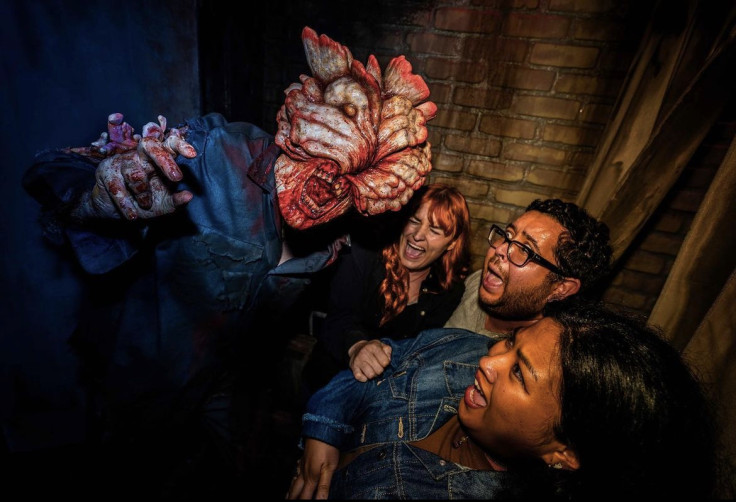
With the spooky season at its full peak, several look forward to the best ways to celebrate Halloween, whether to watch horror films, pumpkin carve, or attend haunted carnivals. But, the one activity people, especially Latinos, always anticipate is 'Universal's Halloween Horror Nights.'
The annual event in Hollywood, California and Orlando, Florida consists of several attractions like haunted houses and mazes of classic horror films and series like 'Stranger Things,' 'Chucky,' 'The Last of Us,' and more.
One maze that audiences could not stop screaming over was 'Monstrous: The Monsters of Latin America.' Universal designed the maze to include the terrifying legends of Latin America such as Tlahuelpuchi, La Lechuza and El Silbón.
John Murdy, creative director for Halloween Horror Nights, told The Latin Times, "As far as what inspired it, we've been doing Latin American content at Halloween Horror Nights for many years going all the way back to 2010. Last year we had done a house on La Llorona and it grew to be extremely popular with our fans so this year we were looking to change It up. In 2022 we had done a scare zone called 'El Pueblo Del Terror' where we featured lots of different characters from Latin American myths and legends. So this year we decided to come up with a concept that could feature multiple characters."
"It makes perfect sense to focus on Latin American content for Halloween Horror Nights Universal Studios Hollywood because that is Los Angeles. Our city is steeped in that cultural heritage. How I think it enhances the event and beyond speaking to our core audience is I think it allows these incredible tales and legends to be presented to people who may not have grown up with them or may be from a different culture," added Murdy.
The reason why Universal's event attracts the Latino demographic is because Estos Monstruos (These Monsters) and the horror genre in general are a big part of Hispanic culture for several reasons. Folklore myths are stories Latinos grew up with and can pertain to certain religions or beliefs.
As Edwin Pagán, Founder-In-Chief of Latin Horror, explained "The genre of horror is deeply rooted in Latin American culture and reflects our various nationalistic idiosyncrasies, and we account for a large percentage of the tickets purchased. One of the primary sources for this fascination is derived from our religious upbringing that is often grounded in Catholicism: "On the Third Day He Rose Again from the Dead." - Apostles Creed 12. "
He added, "A distinct characteristic—and a marked difference between U.S.-based horror and Latin horror is that American horror seeks to destroy the physical, the flesh, and so is more plot-driven and the body count is paramount. Latin horror, on the other hand, destroys the mind and soul. And is also centered on character development, suspense, and the supernatural such as spirits, demons and creatures, rather than gore—although that can be part of it, too. Because of the fact that we also believe, to a certain degree, that there is more to our existence than this human realm (an afterlife), we get right to the heart of the matter, which is why this unknown entity terrorizing me and we seek to know why, instead of simply being at the mercy of an ax. In that regard, we are closer to the conventions of Japanese or Korean horror."
These frightening stories are usually brought to life through the magical celebration of "El Dia de los Muertos" which can be commemorated through face paintings, festivals, and ofrendas (home altars).
These festivities give an insight into how much Latinos are delved into this genre. According to Univision, "When it comes to experiencing the fear a horror movie incites, Hispanics are amongst those first in line....at the box office. This explains why from 2011 to 2015, Hispanic horror movie attendance grew by 13% while non-Hispanic declined by 4%. Additionally, looking at year-to-date, Hispanics make up 26% of the audience—in comparison to 18% of the population."
Furthermore, the spooky season has become a big place in which Latinos feel represented. Murdy adds, "One of the most common things this time of year is to have a guest stop me in the middle of the park and say I just went through 'Monstrous' I'm so excited to see my culture represented and that's when we know we've done a good job."
© 2025 Latin Times. All rights reserved. Do not reproduce without permission.





